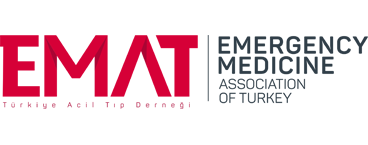Validation of the echoSHOCK protocol for diagnosing the cause of shock in patients arriving at the emergency department
Takshak Shankar1 , Nidhi Kaeley1
, Nidhi Kaeley1 , Parvathy Sasidharan1
, Parvathy Sasidharan1 , Archana Bairwa1
, Archana Bairwa1 , M. S. Salva Ameena2
, M. S. Salva Ameena2 , Sreejith Jayachandran1
, Sreejith Jayachandran1 , Jewel Rani Jose1
, Jewel Rani Jose1 , Jitendra Kumar Yadav1
, Jitendra Kumar Yadav1
1Department of Emergency Medicine, All India Institute of Medical Sciences, Rishikesh, Uttarakhand, India
2Department of Emergency Medicine, All India Institute of Medical Sciences, New Delhi, India
Keywords: Emergency, shock, ultrasound
Abstract
OBJECTIVES: Nontraumatic undifferentiated shock is difficult to manage in the emergency department due to unclear causes, lack of history, and rapid patient deterioration. Timely and appropriate resuscitation is crucial, but both inadequate and excessive resuscitation increase mortality risks. Focused cardiac ultrasound (FoCUS) offers a timely and noninvasive cardiac assessment. The echoSHOCK protocol is derived from FoCUS and improves the ability to identify the etiology of shock in patients at the emergency department. This study’s primary objective was to validate the echoSHOCK protocol for diagnosing the cause of shock in patients arriving at the emergency department. This study’s secondary objective was to determine the prevalence of different etiologies of shock in patients arriving at the emergency department.
METHODS: Adult patients presenting to the emergency department in shock were included in the study after informed consent was obtained. The shock was defined as a systolic blood pressure of <90 mmHg or a mean arterial pressure of <65 mmHg with signs of poor tissue perfusion. Each patient underwent a detailed history, physical examination, and standard investigations. Clinicians reported a presumed etiology and management plan with a confidence level (0–10). The echoSHOCK protocol was then executed and its results were recorded with the respective confidence levels. The protocol used a phased array probe in B mode solely and assessed left ventricle function, compressive pericardial effusion, right ventricular dilatation, interventricular septum flattening, and indicators of hypovolemia. The time taken to perform the protocol and the difficulty level were noted. An expert panel followed the patient till hospital discharge and provided the final diagnosis and intervention.
RESULTS: The study enrolled 223 patients with a mean age of 49.12 years. The echoSHOCK protocol showed a 94.2% agreement with expert panel diagnoses on the cause of shock and proposed interventions, with a statistically significant near perfect agreement (Cohen’s Kappa −0.896, P < 0.001 and 0.897, P < 0.001, respectively). In contrast, the agreement between the clinical assessment, routine workup, and expert panel diagnoses was 46.2% on the cause of shock and 45.7% on the proposed interventions, respectively. The echoSHOCK protocol’s median feasibility score was 7 (interquartile range [IQR]: 6–8), and its median performance time was 7 min (IQR: 6–10). Confidence in diagnoses was significantly higher with echoSHOCK (mean: 7.14) than with clinical examination (mean: 4.47) (Wilcoxon Test: P <0.001).
CONCLUSION: The echoSHOCK protocol rapidly identifies shock etiology in patients at the emergency department. This aids in rapid resuscitation.
How to cite this article: Shankar T, Kaeley N, Sasidharan P, Bairwa A , Ameena M S , Jayachandran S, et al. Validation of the echoSHOCK protocol for diagnosing the cause of shock in patients arriving at the emergency department. Turk J Emerg Med 2025;25:100-6.
This study was approved by the Institutional Ethics Committee of All India Institute of Medical Sciences, Rishikesh, India, on 06/10/2023, bearing approval number AIIMS/IEC/23/395.
• TS: Conceptualization, Methodology, Investigation, Writing (original draft), Writing (review and editing)
• NK: Conceptualization, Methodology, Formal Analysis, Resources, Software, Supervision, Validation, Visualization
• PS: Investigation, Methodology, Writing (original draft), Writing (review and editing)
• AB: Investigation, Writing (original draft), Writing (review and editing)
• SAMS: Investigation, Writing (original draft)
• SJ: Investigation, Writing (original draft)
• JRJ: Investigation, Writing (original draft)
• JKY: Investigation, Writing (original draft).
None Declared.
None.

